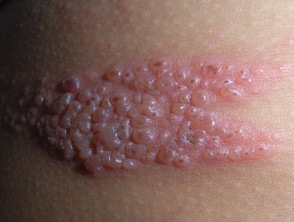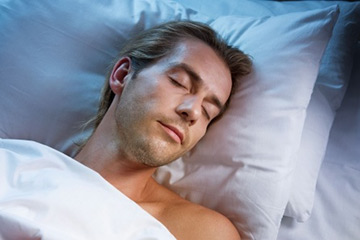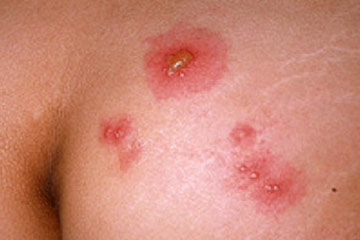Osteoporosis and Arthritis
Osteoporosis
Osteoporosis is a condition in which the bones become less dense and more likely to fracture. In the United States, more than 40 million people either already have osteoporosis or are at high risk due to low bone mass. In osteoporosis, there is a loss of bone tissue that leaves bones less dense and more likely to fracture. It can result in a loss of height, severe back pain, and change in one’s posture. Osteoporosis can impair a person’s ability to walk and can cause prolonged or permanent disability.
Risk factors for developing osteoporosis include:
-
thinness or small frame
-
family history of the disease
-
being postmenopausal and particularly having had early menopause
-
abnormal absence of menstrual periods (amenorrhea)
-
prolonged use of certain medications, such as those used to treat lupus, asthma, thyroid deficiencies, and seizures
-
low calcium intake
-
lack of physical activity
-
smoking
-
excessive alcohol intake.
Osteoporosis is known as a silent disease because it can progress undetected for many years without symptoms until a fracture occurs. Osteoporosis is diagnosed by a bone mineral density test, which is a safe and painless way to detect low bone density.
Although there is no cure for the disease, the Food and Drug Administration has approved several medications to prevent and treat osteoporosis. In addition, a diet rich in calcium and vitamin D, regular weight-bearing exercise, and a healthy lifestyle can prevent or lessen the effects of the disease.
Arthritis
Arthritis is a general term for conditions that affect the joints and surrounding tissues. Joints are places in the body where bones come together, such as the knees, wrists, fingers, toes, and hips. The two most common types of arthritis are osteoarthritis and rheumatoid arthritis.
- Osteoarthritis (OA) is a painful, degenerative joint disease that often involves the hips, knees, neck, lower back, or small joints of the hands. OA usually develops in joints that are injured by repeated overuse from performing a particular task or playing a favorite sport or from carrying around excess body weight. Eventually this injury or repeated impact thins or wears away the cartilage that cushions the ends of the bones in the joint. As a result, the bones rub together, causing a grating sensation. Joint flexibility is reduced, bony spurs develop, and the joint swells. Usually, the first symptom of OA is pain that worsens following exercise or immobility. Treatment usually includes analgesics, topical creams, or nonsteroidal anti-inflammatory drugs (known as NSAIDs); appropriate exercises or physical therapy; joint splinting; or joint replacement surgery for seriously damaged larger joints, such as the knee or hip.
- Rheumatoid arthritis (RA) is an autoimmune inflammatory disease that usually involves various joints in the fingers, thumbs, wrists, elbows, shoulders, knees, feet, and ankles. An autoimmune disease is one in which the body releases enzymes that attack its own healthy tissues. In RA, these enzymes destroy the linings of joints. This causes pain, swelling, stiffness, malformation, and reduced movement and function. People with RA also may have systemic symptoms, such as fatigue, fever, weight loss, eye inflammation, anemia, subcutaneous nodules (bumps under the skin), or pleurisy (a lung inflammation).
Although osteoporosis and osteoarthritis are two very different medical conditions with little in common, the similarity of their names causes great confusion. These conditions develop differently, have different symptoms, are diagnosed differently, and are treated differently. Studies show that people with OA are less likely than average to develop osteoporosis. On the other hand, people with RA may be more likely to develop osteoporosis. This is especially true because some medications used to treat RA can contribute to osteoporosis.
Osteoporosis and arthritis do share many coping strategies. With either or both of these conditions, many people benefit from exercise programs that may include physical therapy and rehabilitation. In general, exercises that emphasize stretching, strengthening, posture, and range of motion are appropriate. Examples include low-impact aerobics, swimming, tai chi, and low-stress yoga. However, people with osteoporosis must take care to avoid activities that include bending forward from the waist, twisting the spine, or lifting heavy weights. People with arthritis must compensate for limited movement in affected joints. Always check with your doctor to determine whether a certain exercise or exercise program is safe for your specific medical situation.
Most people with arthritis will use pain management strategies at some time. This is not always true for people with osteoporosis. Usually, people with osteoporosis need pain relief when they are recovering from a fracture. In cases of severe osteoporosis with multiple spine fractures, pain control also may become part of daily life. Regardless of the cause, pain management strategies are similar for people with osteoporosis, OA, and RA. These strategies are included in the following chart.
This table provides an overview of some of the similarities and differences among osteoporosis, OA, and RA. Some individuals with these conditions may have a different experience or may require a different medical approach to manage their disorder(s).
Osteoporosis |
Osteoarthritis |
Rheumatoid
|
|
|---|---|---|---|
| Risk Factors | |||
| Age-related |
X |
X |
|
| Menopause |
X |
||
| Family history |
X |
X |
X |
| Use of certain medications (e.g., glucocorticoids, seizure medications) |
X |
||
| Calcium deficiency or inadequate vitamin D |
X |
||
| Inactivity |
X |
||
| Overuse of joints |
X |
||
| Smoking |
X |
||
| Excessive alcohol |
X |
||
| Anorexia nervosa |
X |
||
| Excessive weight |
X |
||
| Physical Effects | |||
| Affects entire skeleton |
X |
||
| Affects joints |
X |
X |
|
| Is an autoimmune disease |
X |
||
| Bony spurs |
X |
X |
|
| Enlarged or malformed joints |
X |
X |
|
| Height loss |
X |
||
| Treatment Options | |||
| Raloxifene |
X |
||
| Bisphosphonates |
X |
||
| Calcitonin |
X |
||
| Parathyroid hormone |
X |
||
| Estrogen/hormone therapy |
X |
||
| RANK ligand (RANKL) inhibitor |
X |
||
| Calcium and vitamin D |
X |
||
| Weight management |
X |
||
| Glucocorticoids |
X |
||
| NSAIDs |
X |
X |
X |
| Methotrexate |
X |
||
| Disease-modifying antirheumatic drugs, biologic response modifiers, tumor necrosis factor inhibitors. |
X |
||
| Pain Management | |||
| Pain medication (e.g., NSAIDS, narcotics, muscle relaxants) |
X |
X |
X |
| Rehabilitation |
X |
X |
X |
| Support groups |
X |
X |
X |
| Exercises: postural |
X |
X |
X |
| Exercises: isometric, isotonic, isokinetic |
X |
X |
X |
| Joint splinting |
X |
X |
|
| Physical therapy |
X |
X |
X |
| Passive exercises |
X |
X |
|
| Hip fracture surgical repair (may include hip replacement depending on type of fracture) |
X |
||
| Joint replacement surgery (usually for pain, malformation, or impaired mobility) |
X |
X |
|
| Heat and cold |
X |
X |
X |
| Massage therapy |
X |
X |
X |
| Acupuncture |
X |
X |
X |
| Psychological approaches (e.g., relaxation, visualization, biofeedback) |
X |
X |
X |
| Tai chi |
X |
X |
X |
| Low stress yoga |
X |
X |
X |
Source
National Institute of Arthritis and Musculoskeletal and Skin Diseases (NIAMS)
Information Clearinghouse
National Institutes of Health
Website: http://www.niams.nih.gov






